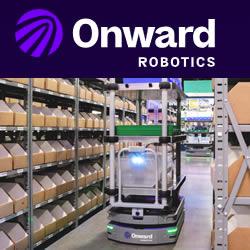MIT's Cheetah Untethered Running And Jumping!
Motors Level Ocean Bottom Seismometers Reliably and Efficiently
YuMi: ABB's Collaborative Robot
Robotics Provides 114-year-old Manufacturer 55 Percent Productivity Gain
ReWalk Robotics Hopes to Raise $50M in IPO
Upcoming Tradeshow, Conference & Exhibition Summary
October, November, December
Education with a Sand Pile, Robots and a Computer Game
Dyson 360 Eye
Harvest Automation Robots Reduce Production Costs and Increase Capacity
High Speed Bipedal Robot Running Using High Speed Visual Feedback
Beginners Tutorial: Autonomous Robot Control Theory
Robotic Biopsy System Drives the Point Home
Unbounded Robotics to Shut Down Due to Issues With Willow Garage Spin-Off Agreement
Upcoming Tradeshow, Conference & Exhibition Summary - September, October, November
A Restaurant In China Where All The Food Is Prepared And Served By Robots
Records 3151 to 3165 of 3734
First | Previous | Next | Last
Featured Product

Onward Robotics - Meet Me Fulfillment Automation
Robotics and Automation - Featured Company

